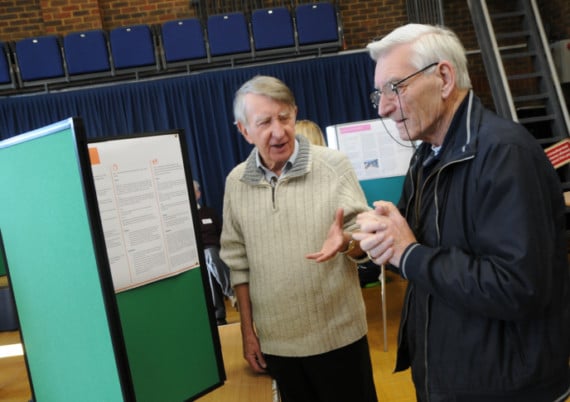The event, which was hosted by steering group members and volunteers from its working parties, was attended by more than 250 people, with a high proportion of attendees providing feedback on all draft proposals.
Acting vice-chairman Chantal Foo said: "Many feedback responses included several overlapping topics, which was expected due to the nature of development plans where one theme influences and impacts on another."
From the initial analysis by the neighbourhood plan steering group, the themes that received the most feedback were access and movement, which covered traffic issues as well as housing.
Chantal added: "Comments from the community are vital in order to enable us to move forward with the development of the neighbourhood plan."
Housing policies point out that Bramshott and Liphook currently has a population of around 8,477 residents living in 3,532 households. With existing approved housing developments, the population is likely to exceed 10,000 by 2021.
The parish is split between two planning authorities, with approximately one third of the area controlled by the South Downs National Park Authority and the remaining two-thirds controlled by East Hampshire District Council.
Liphook is designated a ’large local service centre, with its facilities serving both the residents within the main settlement as well as those who live in the smaller outlying hamlets of Bramshott, Griggs Green, Conford, Passfield, and Hammer Vale.
The wide range and basic services and facilities within the village centre, good transport links and excellent schools within the parish mean that Liphook is classed as a socially and economically sustainable settlement.
Site-specific policies include layout, access routes, building heights, form and massing, site density, boundary treatments, connections beyond the site, internal landscape treatment, preferred architectural mix and a proposed housing mix.
The neighbourhood plan access and movement working party recommends an increase of options on how traffic moves around the village, with the objective of relieving Liphook Square of traffic to reduce the conflict between cars, pedestrian and cyclists.
Submissions were made from all working parties covering topics such as sports and recreation, community, public services, employment, heritage and design, as well as housing and access and movement.
The neighbourhood plan team will now respond to East Hampshire District Council’s draft Local Plan and refine the draft planning policies.
The initial land-use analysis of community feedback will be undertaken by the neighbourhood plan steering committee. The steering group’s consultants, Feria Urbanism, will then advise on the incorporation of these responses as part of the review of draft planning policies, land use analysis and land use proposals.
The neighbourhood plan is currently following the time frame of the EHDC draft Local Plan in order to allow the final version to be assessed against the new plans of both the district council and the South Downs National Park Authority when they are finally approved.
Bramshott and Liphook will now host a formal consultation later this year to give the public the opportunity to view the revised planning policies and land-use proposals within the parish.
Anyone who didn’t attend the exhibition can view all presentations, including draft planning policies and land-use analysis, on the neighbourhood plan website - bramshottandliphookndp.uk - and comment online until Friday, March 1.




